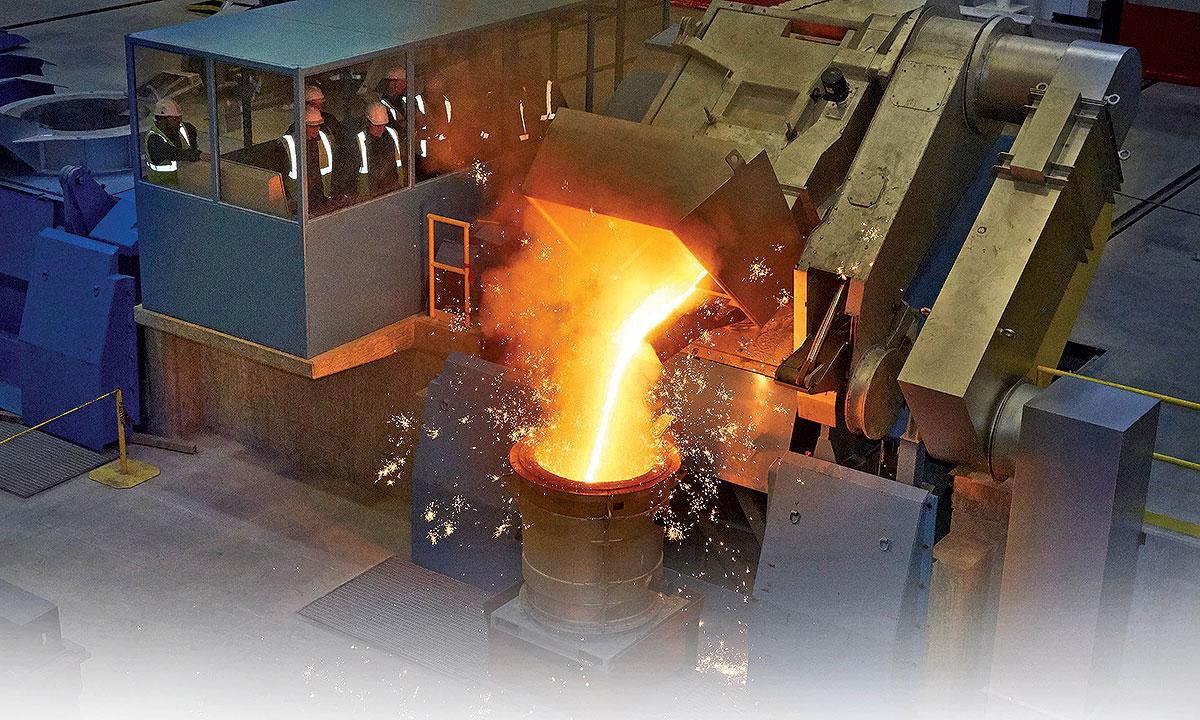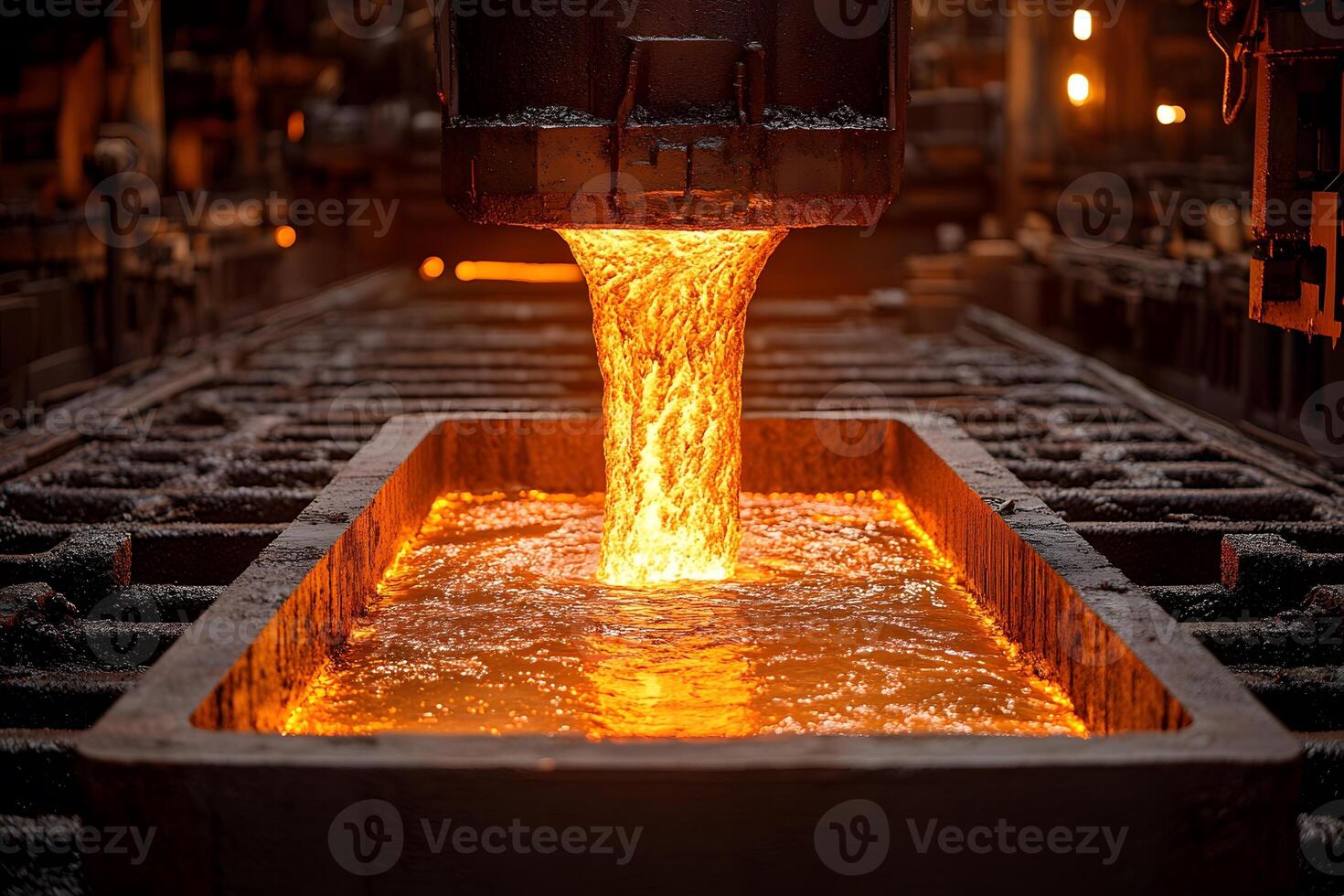Breaking Down the Aluminum Casting Process: How It Works
Wiki Article
Recognizing Metal Casting Procedures: Developments and Patterns in the Foundry Sector
The foundry sector is experiencing substantial changes driven by technological developments. Developments such as 3D printing and man-made intelligence are improving metal casting processes, boosting performance and precision. Lasting practices are acquiring traction, stressing the significance of ecological duty. In enhancement, the intro of advanced products and automation is enhancing general casting quality. These growths suggest a critical change in the market, raising inquiries regarding future directions and effects for makers.Innovations in 3D Printing for Metal Casting
Current developments in 3D printing technology have actually considerably transformed the landscape of metal casting. The assimilation of additive manufacturing strategies has actually enabled the quick production of facility patterns and molds that were impossible or previously hard to accomplish with typical techniques. By making use of materials such as sand and steel powders, manufacturers can develop elaborate geometries that boost design versatility and reduce material waste. This technology not only accelerates the prototyping process but also allows for the customization of components tailored to details applications.
Additionally, 3D printing helps with shorter preparation, which is necessary in industries requiring quick turnaround for parts. The technology likewise sustains the manufacturing of light-weight frameworks, thereby improving energy efficiency in final result. Therefore, the foundry sector is observing a change in the direction of even more lasting techniques, driven by the efficiency and precision offered by these modern 3D printing techniques in metal casting processes.
The Duty of Artificial Knowledge in Precision Production
As sectors increasingly adopt advanced manufacturing technologies, artificial intelligence (AI) is playing a critical duty in enhancing precision manufacturing procedures. AI formulas examine substantial datasets to recognize patterns and enhance manufacturing specifications, leading to boosted precision and performance. In steel casting, AI help in predictive maintenance, reducing downtime by projecting tools failings prior to they happen.Moreover, AI-driven simulations make it possible for suppliers to design the casting process, refining styles and reducing defects. Artificial intelligence strategies boost quality assurance by identifying abnormalities in real-time, thus ensuring that just products fulfilling stringent specs proceed with the production line.

Lasting Practices in the Foundry Market
Sustainability has actually become an essential focus in the foundry sector, prompting makers to embrace techniques that minimize ecological effect while maintaining efficiency - Metal Foundry. One prominent technique includes the recycling of materials, particularly metals, which considerably reduces waste and power consumption. Foundries are significantly executing closed-loop systems, permitting the reuse of sand and other casting products, consequently decreasing the need for virgin sourcesIn enhancement, energy-efficient modern technologies, such as electrical heating systems, are acquiring grip, as they reduced greenhouse gas emissions contrasted to standard methods. Moreover, many shops are checking out the use of environmentally friendly coverings and eco-friendly binders to minimize harmful byproducts. Worker training on sustainable techniques has additionally become crucial, promoting a society of environmental obligation within organizations. Overall, these sustainable techniques not only add to environmental preservation yet also improve the lasting feasibility of the foundry industry in a progressively eco-conscious market.
Innovations in Materials for Boosted Casting Quality
With the constant advancement of the foundry sector, advancements in products have ended up being essential for enhancing casting high quality. Advanced alloys and composite products are increasingly being utilized to enhance mechanical residential or commercial properties and decrease flaws in spreadings. These products frequently provide remarkable strength-to-weight proportions and boosted resistance to corrosion and wear, addressing the needs of modern applications.Additionally, the incorporation of nanomaterials is gaining traction, enabling for finer microstructures that cause enhanced surface area coatings and dimensional accuracy. Aluminum Foundry. 3D printing innovations also play a function in generating complicated geometries with marginal waste, enabling making use of specific products that were previously challenging to cast
Additionally, the growth of environmentally pleasant binders and additives adds to lasting practices while maintaining top quality outcomes. Jointly, these developments not only enhance the performance of actors products but also straighten with the sector's change towards sustainability and efficiency.
Automation and Robotics in Metal Casting Procedures
Automation and robotics are changing metal casting processes by improving and simplifying procedures precision. In modern shops, robotic systems are employed for jobs such as mold handling, pouring, and ending up, substantially decreasing human intervention. This not only minimizes the threat of accidents yet likewise assures constant quality in manufacturing.Automation technologies, such as computer system numerical control (CNC) equipments, assist in intricate layouts and complex geometries that were previously testing to achieve. Real-time information analytics enable producers to check processes and enhance efficiency continuously.
Keep an eye on The assimilation of automation leads to enhanced efficiency and efficiency, allowing shops to meet expanding market demands while reducing lead times. As the market welcomes these advancements, the workforce is likewise progressing, calling for new skills to operate and preserve advanced equipment. On the whole, the adoption of automation and robotics is a critical pattern forming the future of steel casting procedures.
Regularly Asked Inquiries
What Is the Background of Metal Casting Techniques?
Metal casting techniques go back to ancient worlds, with proof of bronze casting in Mesopotamia around 3000 BCE. Over centuries, approaches advanced significantly, integrating improvements in products and modern technology, forming modern-day commercial practices.Exactly How Does Metal Casting Impact the Environment?
Metal casting considerably affects the setting through energy intake, exhausts, and waste generation. Nevertheless, advancements in lasting practices and technologies intend to minimize these results, advertising more environmentally friendly methods within the sector.What Safety And Security Procedures Are Important in Factories?

What Prevail Issues in Metal Casting Products?
Usual issues in metal casting products include porosity, contraction, misruns, cool shuts, and surface flaws. These concerns occur from aspects such as incorrect temperature control, insufficient mold and mildew layout, and Aluminum Casting contamination during the casting procedure.Exactly How Do Foundries Make Sure Quality Assurance in Casting Processes?
Foundries implement rigorous quality assurance actions via normal examinations, standard testing, process monitoring, and adherence to industry standards. These practices aid recognize flaws early, making sure the stability and reliability of the last casting items.Innovations such as 3D printing and synthetic intelligence are reshaping steel casting processes, enhancing performance and precision. Recent innovations in 3D printing innovation have actually considerably transformed the landscape of metal casting. Automation and robotics are changing steel casting procedures by boosting and enhancing operations precision. Metal casting strategies date back to ancient civilizations, with proof of bronze casting in Mesopotamia around 3000 BCE. Common issues in metal casting items include porosity, contraction, misruns, chilly shuts, and surface area flaws.
Report this wiki page